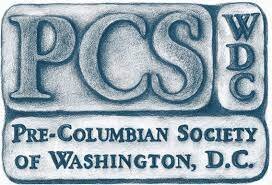Expansion of the Aztec Empire and Changes to Visual Representations of Religious Imagery in the Basin of Mexico by Angel Gonzalez-Lopez, PhD Candidate, University of California, Riverside.
This meeting will be held at the Charles Sumner School, 17th & M Streets, N.W., Washington, D.C.
The meeting starts with refreshments at 6:45 pm and the lecture begins at 7:15 pm.
This talk explores how the expansion of the Aztec Empire caused changes to the visual representation of religious imagery associated with a new political power. By collecting, analyzing, and interpreting the symbolic narratives carved on stone in the Basin of Mexico, during the Postclassic period (1300-1521 AD), our speaker attempts to understand the nature of the interactions between several city-states in the Basin of Mexico and the imperial capitals of Tenochtitlan, Tetzcoco and Tlacopan. The evidence for this research is the volcanic stone, andesite and basalt blocks that were transformed into reliefs and three-dimensional sculptures, in both monumental and portable formats. His project addresses the main question of identifying and discussing whether or not several small groups of elites, or social agents, associated with specific political institutions, promoted the practice of sculpting stone. Did a few individuals with a particular set of ideological and symbolic narratives recruited and trained personnel with special skills, such as sculptors, into specific institutional roles? The talk will address production activities, the political organization, circulation, and consumption of sculpted stones; as well as the group of people involved in making them, the set of sponsors, artists present in workshops, places of display, and their audiences. The talk will draw on different lines of evidence such as archaeological contexts, ethnohistory, and the discourses depicted in the stone images.
Angel Gonzalez-Lopez is a doctoral student in the Department of Anthropology at the University of California, Riverside, specializing in Aztec iconography. For 10 years prior to beginning his graduate studies, Gonzalez was a member of the Proyecto Templo Mayor and was involved in the ongoing excavations of the Aztec Main Temple of Tenochtitlan in Mexico City. His research focuses on Postclassic Central Mexico, although he also has worked at Teotihuacan, Cuicuilco, Cholula, the Sierra de las Navajas in Hidalgo, the Sierra Gorda in Queretaro, the central valleys of Oaxaca, and southern Quintana Roo. His most recent book is Imagenes Sagradas: Iconografia en Esculturas de Piedra del Recinto Sagrado de Tenochtitlan y el Museo Etnografico published by the Instituto Nacional de Antropologia (INAH) Press.

